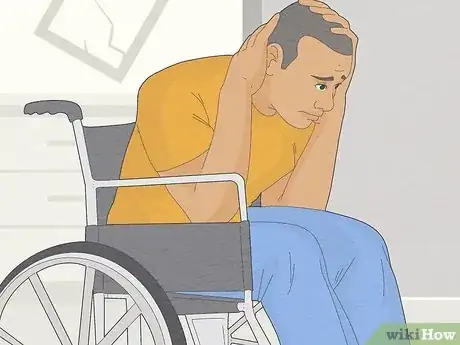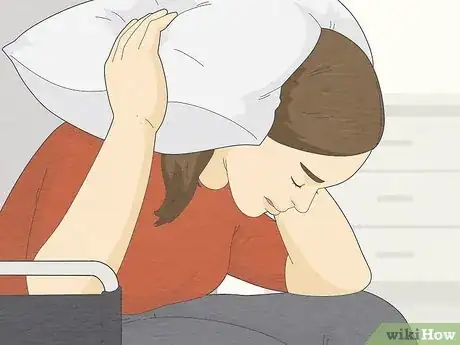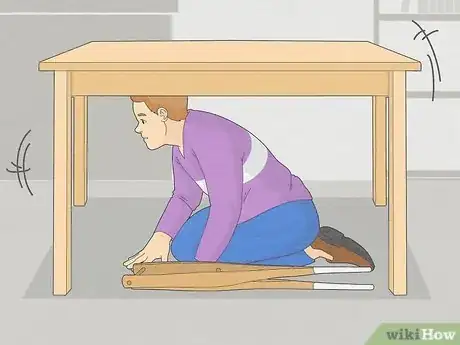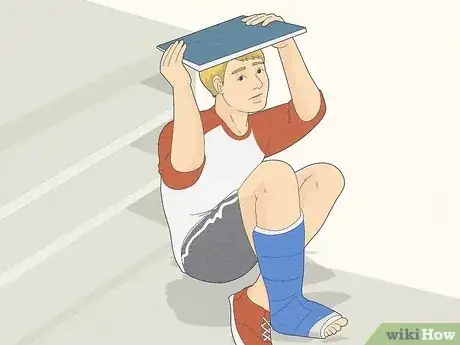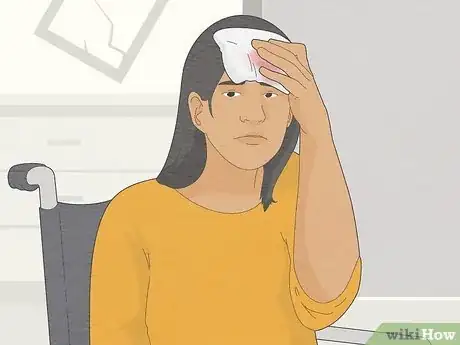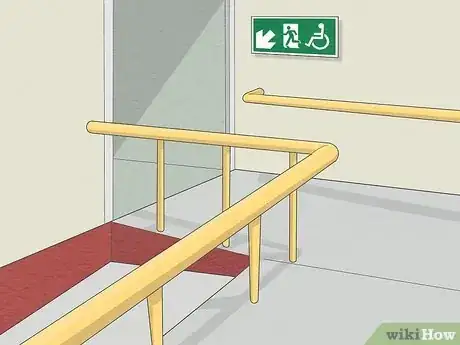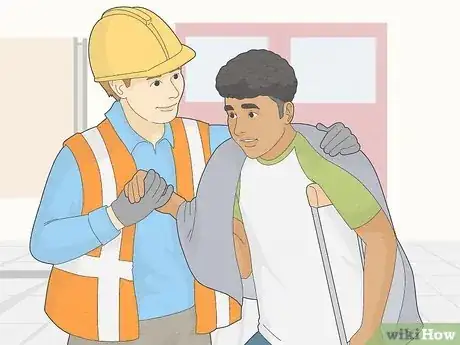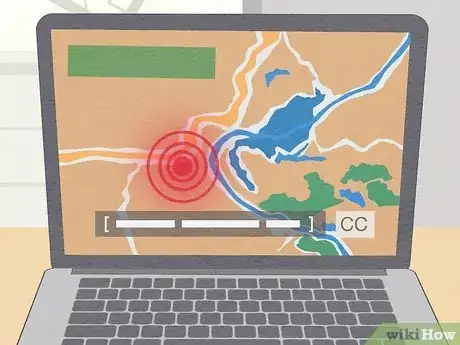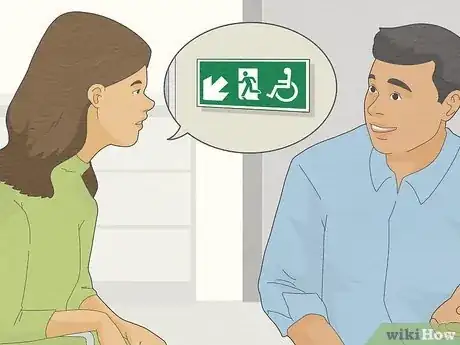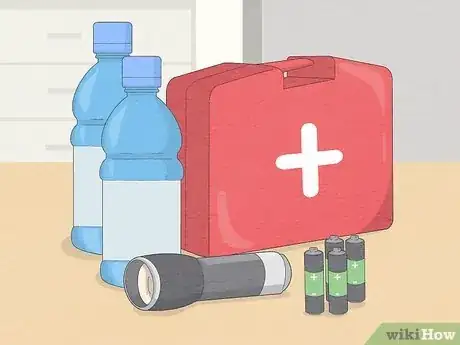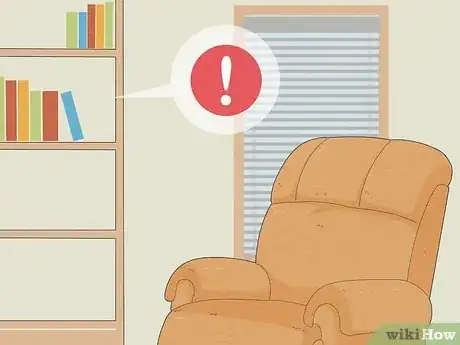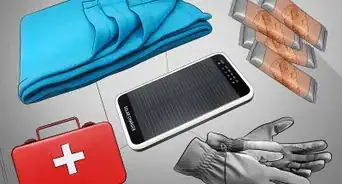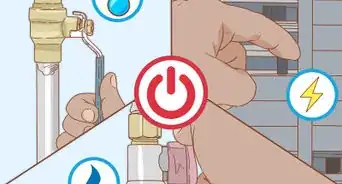This article was co-authored by wikiHow Staff. Our trained team of editors and researchers validate articles for accuracy and comprehensiveness. wikiHow's Content Management Team carefully monitors the work from our editorial staff to ensure that each article is backed by trusted research and meets our high quality standards.
There are 7 references cited in this article, which can be found at the bottom of the page.
This article has been viewed 89,740 times.
Learn more...
Staying prepared for any natural disaster that you may encounter can help you feel at ease. Your disability does not have to inhibit you in an emergency situation, especially if you plan ahead. Remain calm and develop a survival plan so that you can feel confident and well-equipped during an earthquake.
Steps
Dropping and Covering Your Body
-
1Drop onto your hands and knees. If you are in a wheelchair or otherwise unable to do this, do not worry. Duck your head, and cover your neck to protect it from debris. Stay as low to the ground as possible.[1]
-
2Protect your head and neck from harm. Use one arm to cover your neck and head, in case nearby objects fall on you. If possible, hold a pillow or couch cushion over your neck to protect it from debris.[2]Advertisement
-
3Cover your body. Hide underneath a table or desk if you are close to one when the earthquake starts. Use surrounding items such as couch cushions to cover as much of your body as possible, as earthquake movement is unpredictable and can cause many things to fall from the walls or topple over onto the floor.[3]
-
4Hold onto something secure. Use one hand to stabilize yourself and prevent yourself from being hurt. If possible, keep close to the ground in a clear space and away from furniture.[4]
Adapting to Your Situation
-
1Stay in place during the earthquake. Natural disasters come without notice, and being exposed to the outside conditions can be dangerous. Stay put and wait for the earthquake to end before moving, unless you are in a dangerous location.[5]
- If you are in an unsafe location, wheel or walk yourself to the nearest indoor location. Finding coverage for your head and neck to avoid falling debris is the most important move you can make.
-
2Use the surroundings to your advantage. If you are in bed when the earthquake happens, stay there. Use your pillows to cover your head and body. Hold onto the headboard or edges of the bed, so that you are not thrown off during the shaking.
-
3Keep your service animal close. If you have a service animal with you, keep it close by your side. Tell your pet to “sit and stay.”
- Remember that your animal may be scared and unsure of what is going on, so keep it calm by petting its body and using a soft, reassuring voice to give commands.
Reacting After the Earthquake
-
1Check yourself for injury. Move your limbs and make sure that you were not harmed by falling objects during the earthquake. If you are bleeding, wrap the wound in a towel or bandage to stop the flow of blood. Get medical attention as soon as possible.[6]
-
2Avoid using elevators. Elevators are unsafe because the power may have gone out during the earthquake, and you could get trapped. Look for accessible ramps if you are handicapped. If there are only stairs or elevators available, simply stay in place and wait for help.
-
3Move with caution. Aftershocks are possible, so be wary of moving from a safe location. When safe to do so, go to the designated area for evacuation and wait for the rescuers to pick you up. Stay aware of unstable surroundings and potentially falling objects.
- Beware of broken glass or other debris that can result from an earthquake. If you have a vision disability, realize that furniture has shifted during the earthquake, so you are safest in staying where you are until help comes.
-
4Contact your personal support network. This network of people should reside in close distance of your home, and have access to your home. Give spare keys only to people you trust and those who are able to offer immediate assistance.
Creating a Disaster Plan
-
1Plan a way to learn information about earthquakes. If you are deaf, for instance, be sure that your television is set properly to display captions so that you can stay up to date with storm warnings. Set up a plan with a trusted source to obtain vital updates in emergency situations.[7]
-
2Take time to develop a safety plan. Your plan should be catered to your specific disability. Go over the plan with your caretaker or someone that you trust, and communicate with everyone who lives in your household so that everyone will be on the same page if such an event occurs.[8]
- Make a plan that involves rendezvous points, contact people and ways to communicate with them, and escape routes that include wheelchair accessible locations, if that is applicable to you.
-
3Set up emergency supply kits. Create kits for emergencies that include key items such as water bottles, flashlights, and batteries. A first-aid kit should also be included. Scatter these kits around your place of residence so that you can be prepared for any scenario.
-
4Create a safe living environment. Secure your space by ensuring that your surroundings will not endanger you. Keep your bookcases or high shelving units far from your bed, couch, or anywhere else you sit or sleep. Never leave electrical appliances plugged in near the tub or sink.
References
- ↑ http://www.earthquakecountry.org/downloads/ShakeOut_Earthquake_Tips_Disabilities_AFN.pdf
- ↑ https://www.cdc.gov/ncbddd/disabilityandhealth/emergencypreparedness.html
- ↑ http://www.earthquakecountry.org/downloads/ShakeOut_Earthquake_Guide_Disabilities_AFN.pdf
- ↑ https://www.disabled-world.com/disability/emergency/
- ↑ https://www.cdc.gov/ncbddd/disabilityandhealth/emergencypreparedness.html
- ↑ http://www.earthquakecountry.org/downloads/ShakeOut_Earthquake_Guide_Disabilities_AFN.pdf
- ↑ http://www.earthquakecountry.org/disability/
- ↑ http://www.redcross.org/prepare/location/home-family/disabilities
